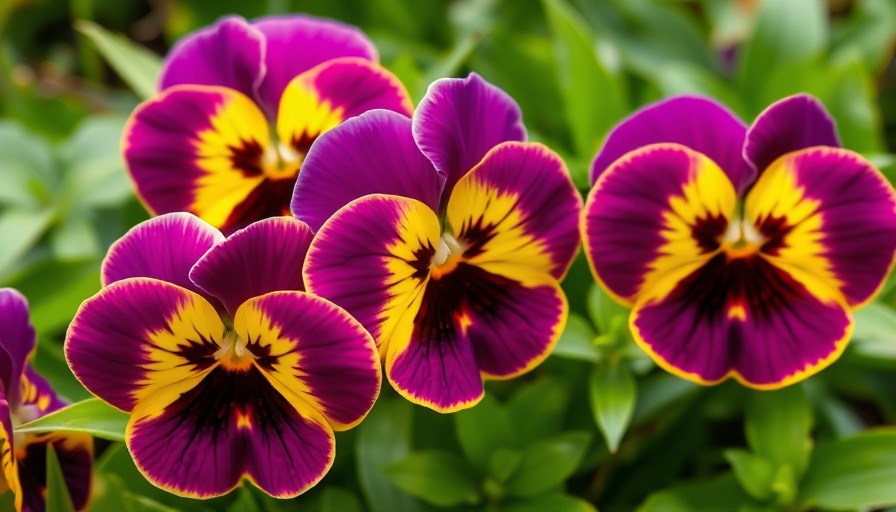
Discovering the Joys of Pansy Gardening
Pansies, with their vibrant colors and unique patterns, serve as a canvas of delight each spring, particularly as they bloom in the often overlooked months of late winter and early spring. For gardeners seeking to invigorate their outdoor spaces, these hardy plants aren’t just pretty additions; they also symbolize resilience and cheerfulness in the bleakest of seasons. In this guide, we dive into the 19 best pansy varieties to consider for your garden, providing insights into their unique characteristics and care needs.
Why Pansies Are Perfect for Every Gardener
Pansies (Viola × wittrockiana) are notable hybrids that have been meticulously cultivated over centuries, yielding an impressive spectrum of colors and patterns. For urban and suburban dwellers looking to enhance small garden spaces, pansies are compact yet dense, making them ideal for borders and mass plantings. Ranging in height from 4 to 12 inches and spreading across 8 to 30 inches, these flowers cater to diverse landscaping needs.
Moreover, with their ability to flourish in cooler temperatures, pansies are not only visually appealing but also resilient. Many gardeners appreciate that they can be grown from seed, although starting them indoors helps to maximize their bloom potential.
The Best Pansy Varieties for Home Gardens
1. **Blue Skies**: Bright and cheerful, perfect for enhancing garden edges.
2. **Frizzle Sizzle Mix**: Features ruffled petals that add whimsical texture.
3. **Frost**: A subtle beauty that provides soft coloration for cooler spots.
4. **Moulin Rouge**: Showcases rich, deep tones that pop in sunny areas.
5. **Neon Violet**: A striking option that commands attention in any floral arrangement.
...and many more options such as the **Swiss Giants Mix** and the timeless **True Blue**, all boasting unique characteristics that cater to different gardening aesthetics and preferences.
Caring for Your Pansies
Although pansies are relatively low maintenance, they do have specific care needs. Providing well-draining soil enriched with organic matter is essential for their growth. Regular watering, particularly in warmer weather, helps keep the plants hydrated while avoiding waterlogged conditions that can lead to root rot. Moreover, incorporating pest-resistant plants nearby can help combat common garden pests attracted to pansies.
Valuable Gardening Hacks for Pansy Enthusiasts
For those looking to maximize their pansy garden, implementing credible gardening hacks can make a substantial difference. For instance, gardeners might consider using biodegradable pots for starting seeds, which reduce transplant shock significantly and are eco-friendly. Employing companion planting strategies also enhances growth—pairing with vegetables such as carrots can deter pests while optimizing space.
Embracing the Spirit of Gardening
Engaging with plants like pansies nurtures a deeper connection with nature and helps foster a sense of community and accomplishment. As you cultivate your flowers, you’re not just tending to plants; you’re also nurturing your spirit. The act of gardening can improve mental health and well-being, reminding us that even the smallest blooms can have a profound impact on our lives.
Whether you're an experienced green thumb or a beginner exploring the beauty of home gardening, incorporating pansies into your planting scheme opens up a world of vibrant possibilities.
Call to Action
Ready to bring color and joy to your garden? Explore your local nurseries or online vendors to discover the best pansy varieties to plant this season. Don’t miss out on the chance to experience the vibrant blooms that could transform your outdoor space—start your pansy journey today!
 Add Row
Add Row  Add
Add 




 Add Row
Add Row  Add
Add 

Write A Comment